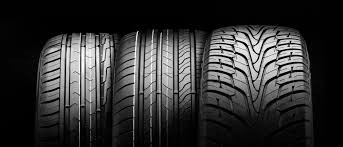Run-Flat Tires: Pros, Cons, and Should You Switch?
When it comes to your vehicle, tire safety plays a critical role in ensuring smooth and secure driving. Among the latest advancements in tire technology are run-flat tires, designed to keep you moving even after a puncture. But are they the right choice for you? Let’s dive into the advantages of run-flat tires, explore their drawbacks, and help you decide whether it’s time to make the switch.
What Are Run-Flat Tires?
Breaking Down the Technology Behind Run-Flat Tires
Run-flat tires are engineered to stay functional even when they lose air pressure due to a puncture or damage. This is achieved through reinforced sidewalls that can support the vehicle’s weight temporarily, allowing drivers to continue traveling for a limited distance—usually up to 50 miles at a reduced speed.
How Do Run-Flat Tires Work?
Traditional tires collapse when punctured, leaving you stranded. In contrast, run-flat tires use innovative materials and structure to maintain their shape and support. This feature can be a lifesaver in emergency situations, keeping you safe and mobile.
Key Differences Between Run-Flat Tires and Regular Tires
While regular tires rely on air pressure for support, run-flat tires add an extra layer of durability. However, this also means they may perform differently in terms of ride comfort and longevity.
The Pros of Run-Flat Tires
Enhanced Safety Features of Run-Flat Tires
One of the most significant advantages of run-flat tires is their ability to maintain control after a puncture. This reduces the risk of accidents caused by sudden tire failures, especially on highways.
Convenience During a Tire Emergency
Imagine getting a flat tire in a remote area. With run-flat tires, you can continue driving to the nearest repair shop instead of waiting for roadside assistance.
Reduced Need for a Spare Tire
Run-flat tires eliminate the need for carrying a bulky spare tire, freeing up valuable trunk space. This can be especially beneficial for compact cars or vehicles with limited storage.
Improved Stability After a Puncture
Thanks to their reinforced design, run-flat tires provide better handling and stability, even when punctured. This ensures a smoother, safer drive during emergencies.
The Cons of Run-Flat Tires
Higher Cost Compared to Standard Tires
Run-flat tires come at a premium price, making them a more significant investment than traditional tires. While the safety benefits are undeniable, the upfront cost can be a deterrent for budget-conscious drivers.
Limited Repairability
Unfortunately, most run-flat tires are not designed to be repaired after a puncture. This means you’ll likely need to replace the tire entirely, adding to the long-term costs.
Shorter Lifespan and Potential for a Rougher Ride
Run-flat tires tend to wear out faster than standard options. Additionally, their reinforced design can lead to a stiffer, less comfortable ride, especially on uneven roads.
Performance Limitations in Extreme Conditions
While reliable, run-flat tires may not perform as well in extreme weather or off-road conditions. For drivers in harsh climates, this could be a significant drawback.
Should You Switch to Run-Flat Tires?
Consider Your Driving Habits and Needs
Do you frequently drive in areas where roadside assistance is unavailable? Are you looking for added peace of mind during long trips? If so, run-flat tire technology may be worth exploring.
Compatibility With Your Vehicle
Not all vehicles are equipped to handle run-flat tires. Before switching, consult your car manufacturer or a trusted mechanic to ensure compatibility.
Cost vs. Benefit Analysis
While the upfront cost is higher, the potential savings in convenience and safety could outweigh the expense. Consider how often you encounter tire-related issues and whether the benefits justify the price.
Expert Opinions on Switching to Run-Flat Tires
Many automotive experts recommend run-flat tires for drivers prioritizing safety and convenience. However, they caution against the drawbacks, such as higher costs and limited repair options.
Final Thoughts on Run-Flat Tires
Balancing Safety, Convenience, and Cost
Ultimately, the decision to switch to run-flat tires depends on your priorities. If you value safety and convenience over cost, they could be a game-changer. However, if budget or ride comfort is your primary concern, traditional tires might be a better fit.
Future Innovations in Run-Flat Tire Technology
As technology continues to advance, the next generation of run-flat tires may address current limitations. From improved durability to better ride comfort, the future looks promising for this innovative tire solution.

